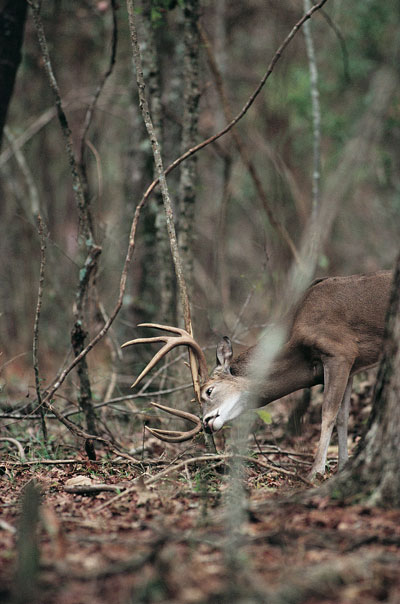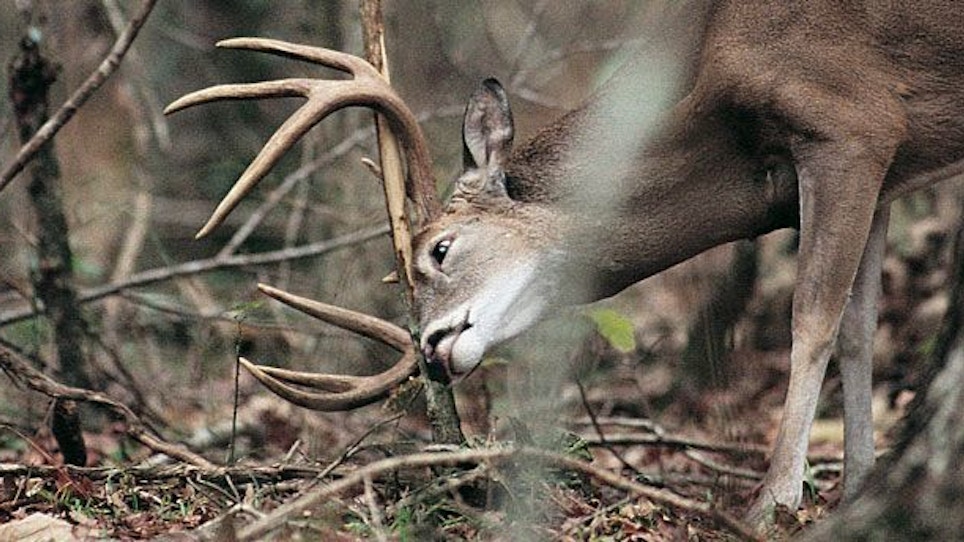 “During the rut, the deer are in constant motion, and are often found in bands. The necks of the bucks swell and their sides grow gaunt; they chase the does all night, and their flesh becomes strong and stringy—far inferior to that of the barren does and yearlings. The old bucks then wage desperate conflicts with one another, and bully their smaller brethren unmercifully. Unlike elk, whitetails are generally silent in the rutting season. They occasionally grunt when fighting; and once, on a fall evening, I heard two young bucks barking in a ravine back of my ranch house; but this was a wholly exceptional instance.”
“During the rut, the deer are in constant motion, and are often found in bands. The necks of the bucks swell and their sides grow gaunt; they chase the does all night, and their flesh becomes strong and stringy—far inferior to that of the barren does and yearlings. The old bucks then wage desperate conflicts with one another, and bully their smaller brethren unmercifully. Unlike elk, whitetails are generally silent in the rutting season. They occasionally grunt when fighting; and once, on a fall evening, I heard two young bucks barking in a ravine back of my ranch house; but this was a wholly exceptional instance.”
Theodore Roosevelt, The Wilderness Hunter
“The extensive home ranges of mature bucks will frequently overlap. These are the deer most likely to fight. The fights I have seen were not over does, but because of the onset of the breeding season and one buck’s invasion of another’s turf.”
Leonard Lee Rue III, The Deer of North America
“One of the determining factors in telling how big the buck is that’s working a scrape can sometimes be determined by the branches that overhang the scrape. Big white-tailed bucks are simply big animals. Their antlers can reach higher into overhanging branches than do the antlers of smaller bucks. When examining scrapes, note how high the buck has broken off the branches above the scrape. After you have examined several scrapes, you will begin to see the differences. It will soon become obvious that some bucks are larger.
Toad Smith, Toad’s Tricks to Taking Whitetails in the Corn—and Everywhere Else
“Even if you have pure, native deer, there still may be significant modifiers to the normal rut pattern. In some years in East Texas, the rut pattern is very distinct, while in others it appears abnormal. Body condition has a great deal to do with the timing of the rut. If deer are in poor condition, from overpopulation or a bad growing season, rut timing will be less pronounced and may be spread over a long period of time. This is the trickle rut so dreaded by many hunters. Well-managed herds typically have well-defined peaks in the rut, lasting only a few days, with lesser peaks following 25 to 28 days later.”
Dr. James C. Kroll and Ben Koerth, Solving the Mysteries of Deer Movement






